The Corsair Carbide 400Q Case Review
by E. Fylladitakis on April 29, 2016 9:00 AM EST- Posted in
- Cases/Cooling/PSUs
- Corsair
- ATX
- E-ATX
- Carbide
The Interior of the Corsair Carbide 400Q
The side panels of the Carbide 400Q can be easily detached by removing two thumbscrews for each. Both of the side panels, and including the top panel cover and the faceplate, have a thin layer of sound dampening material applied to them. Considering the openings on the sides of the front panel and the rear of the case, the impact of the material on the acoustics of the case is unlikely to be very high, but every little bit can help.
The interior of the Carbide 400Q is all black, including every cable, screw and stand-off. The only parts breaking the blackness of the case are the grey impellers of the stock cooling fans. The metallic surfaces are sprayed with the same satin black paint as the exterior. The plastic covers across the PSU compartment and HDD cage are sprayed with the satin black paint as well, but it is not nearly as fingerprint resistant as the metallic parts of the case. Strangely, only the three main openings next to the motherboard feature rubber grommet covers. There are more openings next to those, as well as several more above and below the motherboard, none of which has a rubber grommet installed.
Lacking any front/external drive cages, the interior of the Carbide 400Q is very spacious, allowing for the installation of E-ATX motherboards. Graphics cards up to 370 mm long will fit as well, but note that the installation of fans or radiators will reduce that clearance. A large rectangular hole is cut on the motherboard's tray to allow for the installation of aftermarket coolers without having to remove the motherboard. Some of the very large air coolers may not fit in the Carbide 400Q, as the height of the CPU cooler is limited to 170 mm.
To remove the two plastic covers that separate the PSU and HDD area from the rest of the case, the HDD cover has to come off first, then the PSU cover. There is a hole at the top of the covers that allows for the routing of a PSU cable directly towards the system, but we found that to be greatly inconvenient because it then has to be disconnected for the covers to be removed. Considering that this particular design has no side window, the very presence of the covers is strange to begin with.
After the covers have been removed, the PSU area and HDD cage can be clearly seen. The Carbide 400Q can hold PSUs up to 190 mm long, but we do not recommend the installation of such long units. To install such a PSU, the HDD cage will have to be moved to its auxiliary position, towards the front of the case, and routing the cables through the right panel’s openings becomes troubling. Furthermore, moving the HDD cage to its auxiliary position will block the installation of radiators at the front of the case.
The Carbide 400Q is somewhat limiting when it comes to drives. Three 2.5” drive trays can be found at the rear side of the motherboard’s tray and another two 3.5” or 2.5” drives can be installed on the removable plastic trays of the small drives cage. Nevertheless, the number of drives that the Carbide 400Q supports should be sufficient for the vast majority of home and office users.
For the means of this review, we installed a Corsair AX760i with the red cable set, for strong visual contrast. The AX760i fits tightly inside the Carbide 400Q without moving the HDD cage to its auxiliary position, with the installation of extra cables after the PSU has been installed being all but impossible. The cables are long enough for a standard system and their routing across the rear of the motherboard tray and through the rubber grommets is very easy.
A standard ATX system comfortably fits inside the system area of the Carbide 400Q, allowing for easy upgrades and maintenance. Since the case is designed to hold up to E-ATX motherboards, the openings for the cables are a few centimeters away from the edge our standard ATX motherboard. There is more than enough space for long cards and most models should fit even if a radiator has been installed at the front of the case. The clearance above the motherboard is small but Corsair offset the top mounting slots towards the left side of the case, allowing for the installation of fans and radiators. Tall motherboard heatsinks and RAM modules however can create compatibility issues here.


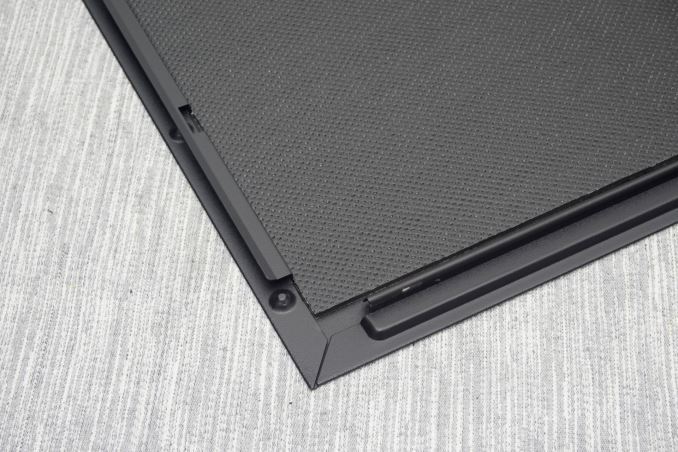
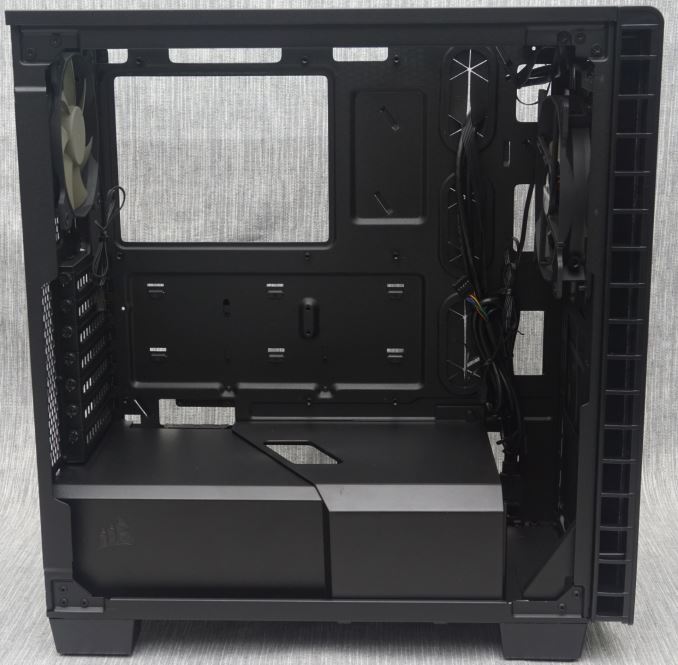
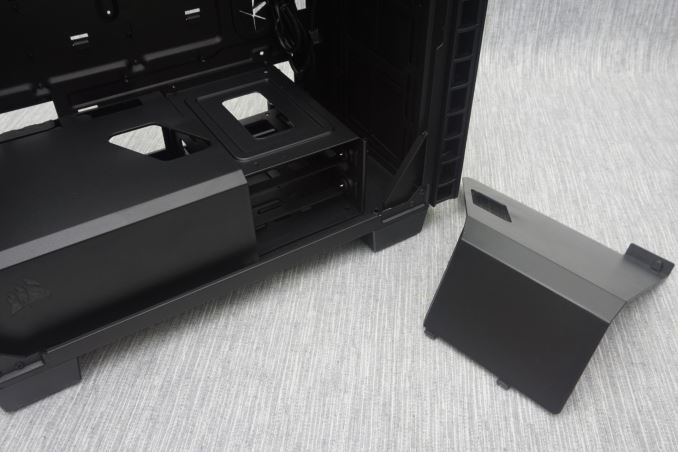
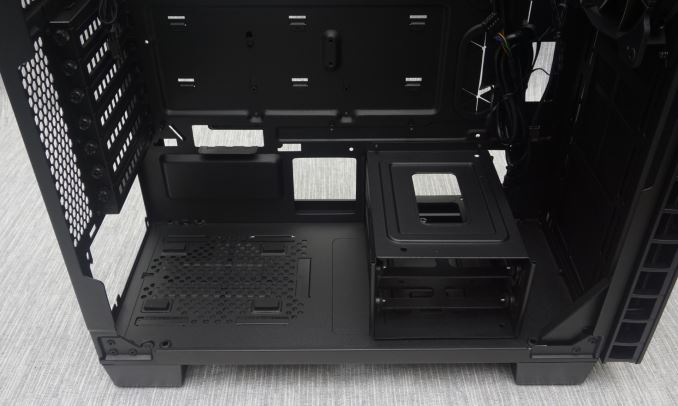

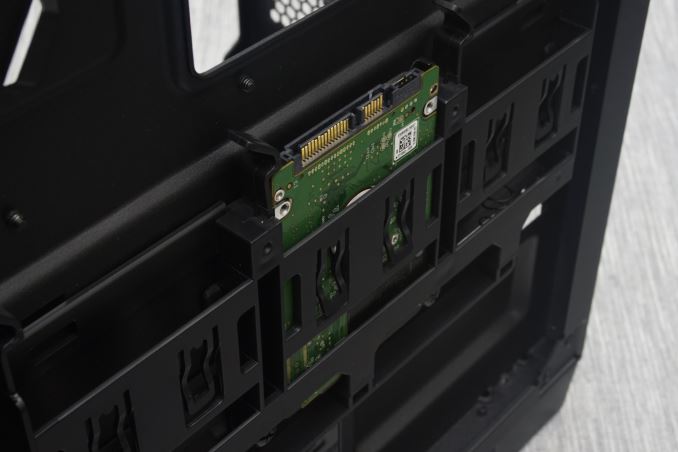
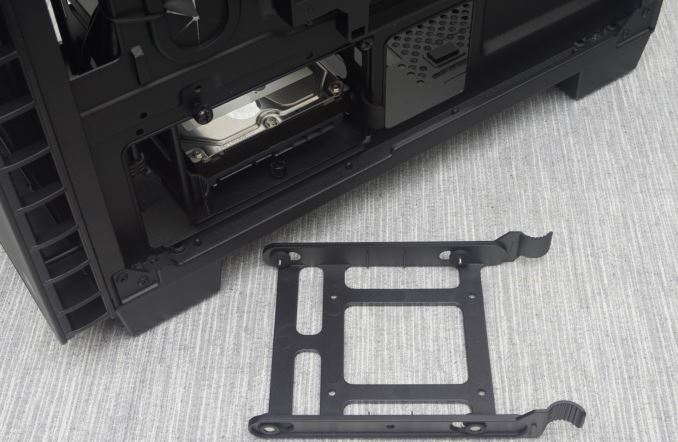
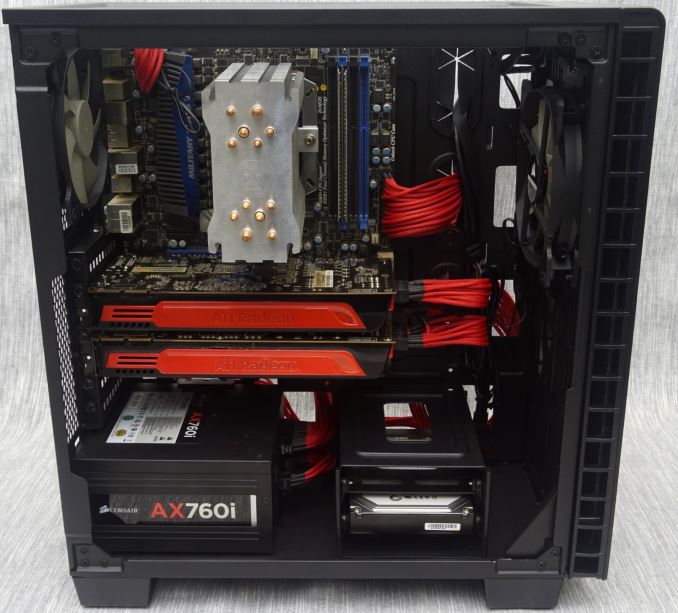
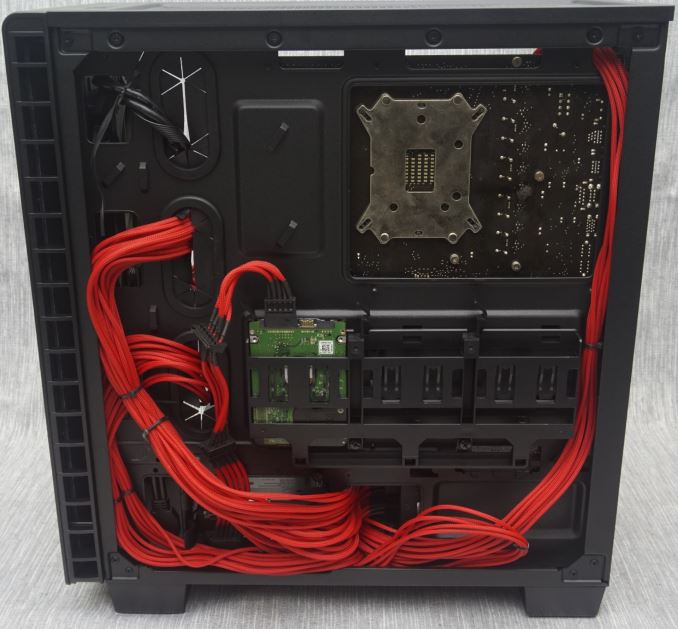








63 Comments
View All Comments
LordanSS - Friday, April 29, 2016 - link
To be honest, I'd like to have space to install a BluRay burner for use as a backup solution for important things.Not talking about using normal BR media, but the M-Discs instead for more permanent backup. But I guess this would be an edge case, and an absolute minority of consumers for desktop cases.
Black Obsidian - Friday, April 29, 2016 - link
For occasional use, a USB3 Blu-Ray burner seems like the natural solution. Pull it out the odd time you need it, leave it stored when you don't.Murloc - Saturday, April 30, 2016 - link
who back-ups on optical disks anymore?Not even OSes are sold on disks anymore.
LordanSS - Saturday, April 30, 2016 - link
I reckon you either did not read, did not understand or just don't know what I was talking about.https://en.wikipedia.org/wiki/M-DISC
Valantar - Sunday, May 1, 2016 - link
Sorry, but they are. My household (two people) has five PCs in regular use. None have optical drives. We do have an external DVD drive for whenever the need might arise, but it hasn't been used for years. It just sits atop the HTPC like a tombstone to optical media. We do play blu-rays from time to time, but the PS3 does that job better than the PC. I can't remember needing an optical drive for drivers or anything else since before Windows 7.The space needed for 5,25" bays is better utilized for more modern use cases, like radiators, drive mounts or space savings (or all three, like in this case). I _really_ regret getting my Fractal Define R4 half a year before the launch of the Define S - I'd much rather have an additional 140mm fan in the front than two unused 5,25" bays.
twtech - Saturday, May 28, 2016 - link
I still use optical media for some things, including OS installs. I don't use the drive a lot, but if I'm going to have a huge metal box for my PC enclosure anyway, it might as well have an internal optical drive for those times when I would like to use one.HOOfan 1 - Friday, April 29, 2016 - link
With the lack of 5.25 inch drive bays and the covered basement, I would say it is more of a competitor to the NZXT S340 and less a successor of the 300Rvenkatsrin - Friday, April 29, 2016 - link
Why do you keep reviewing big ugly cases, who needs such monstrosities??There is hardly any coverage on matx or mitx cases... boo hoo...
BrokenCrayons - Friday, April 29, 2016 - link
I don't think computer case products really are changed that often by manufacturers. Just doing a quick search on Amazon, I was able to find mATX case designs that are essentially identical to the ones I was purchasing 5-10 years ago. It's probably just that there's not that many out there to review. Let's admit it, a case usually lasts a very long time. I've got one that was originally purchased in 2006 and really have no intention of replacing it as long as there are ATX motherboards around.Though I admit I could probably make a certain person very happy if I bought a Corsair Carbide 400Q for him and stuffed a new gaming computer into it. But I don't want company in my MMOs so I'd rather keep him on a console where gaming is simpler and easier for him. Plus there's sports titles on consoles and he's sort of a sports game guy. PC games...well those that aren't directly ported from consoles anyway...those are more for thoughtful or social types.
CaedenV - Friday, April 29, 2016 - link
Any article with a coke can for scale is instantly a great article lol